Recent High Court decisions suggest that contractors will struggle to successfully challenge the costs of an implemented and effective remedial cladding solution, especially one based on expert advice.
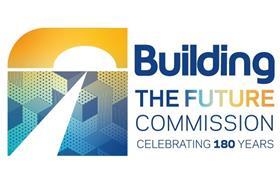
The ��Ȧ Safety Act 2022’s reform of building safety legislation was needed well before the Grenfell Tower disaster in 2017 – but it took a major disaster to force the issue. The contributory causes and responsibility for the fire were many, and the government comes out badly now that the inquiry has heard from six groups whose roles and actions have been under scrutiny.
This is a “rogues gallery” scenario. It foreshadows the apportionment of the risk and responsibility that we shall see once the inquiry report is published and will lead to prosecutions and more.
A couple of important comments from the inquiry show the direction of travel.
In June 2022 Jason Beer KC, on behalf of the Department for Levelling Up, Housing and Communities, admitted during closing submissions to the Grenfell Inquiry that the government failed to provide sufficient oversight of a regulatory system that could have prevented the fire. He outlined four reasons the government missed opportunities to look into whether the regulatory system was operating effectively: a lack of formal oversight, a reliance on industry, departmental financial constraints and the government’s anti-red tape policy.
This foreshadows the apportionment of the risk and responsibility that we shall see once the inquiry report is published and will lead to prosecutions
Stephanie Barwise KC, representing the bereaved and survivors, said: “It is therefore fundamentally misleading to characterise the parlous state of the building regulations as an unfortunate by-product of a prolonged lapse in concentration by the department’s officials, tinged with some unspecified ministerial responsibility and a degree of austerity. It is more than that.
“The evidence points to wilful blindness and complacency towards safety, which was subjugated to the more pressing and politically appealing housing and deregulatory agendas.” Strong words indeed.
>>Click here for more on the ��Ȧ the Future Commission
Stephen Hockman KC, acting on behalf of Arconic, which sold the cladding panels used on Grenfell Tower, told the inquiry that the evidence of a number of witnesses “lacks plausibility”. He suggested that, even before the Grenfell fire, no one was willing to face up to the legacy issue of buildings with combustible materials and how that might be resolved.
Hockman submitted: “What happened at Grenfell was truly a storm in which the ACM panels were but one component of the maelstrom.”
Professor José Torero pointed out how the guidance for interpreting cladding fire tests had been “full of mistakes from beginning to end”. And Professor Luke Bisby said that the regulatory framework “encouraged” builders to “exploit guidance in pursuit of profit and that “part of the reason … is that no emphasis was placed by the regulatory regime or by the relevant government department on the need for test data to be collated and shared transparently”. There was an over-reliance on individual product testing, rather than looking at how products work together in a much larger system like the one that was installed on Grenfell Tower.
Another inquiry KC, Tim Green, submitted that the government’s decision to ban the use of combustible products following the Grenfell fire was taken without the benefit of the expert evidence from the inquiry, and without a full understanding of the unintended consequences.
Waking watch costs too
We have now had two decisions to shine some light on all this as well as a tribunal hearing on what happened during the Olympic Village’s conversion to residential use.
The first case is Martlet Homes Ltd vs Mulalley & Co Ltd. This was the Technology and Construction Court’s (TCC) first judgment on fire safety of external wall insulation, or EWI, and was handed down in July 2022.
It concerned a contract to refurbish five tower blocks in Gosport with an external wall Sto render insulation system that included combustible expanded polystyrene insulation (EPS), fire breaks and render covering.
There were defects in the installation of both the fire breaks and the EPS. The building owner, Martlet, replaced the system with non-combustible external wall insulation and claimed the cost of doing so – and the waking watch in the meantime – from its contractor Mulalley.
The TCC has plainly demonstrated that it will take a firm view on an external wall system’s compliance with ��Ȧ Regulations in force at the time of construction
Mulalley in turn denied liability, saying the real cause for the remedial works was Martlet’s recognition, triggered by the Grenfell fire, of the risk posed by the Sto system, which (being combustible) did not meet the enhanced fire safety standards in force after the works were completed and which were further heightened following Grenfell.
Mulalley also contended that the only work necessary to rectify the installation defects involved cutting out and replacing the fire barriers, installing additional dowels through the EPS and re-rendering.
In response, Martlet argued that the Sto system was in breach of specification at the time of installation by Mulalley.
HHJ Stephen Davies considered the ��Ȧ Regulations 2000 and 2010, BRE 135 (1988 and 2003 editions), Approved Document B (2002 and 2006 editions) and the BBA certificates relating to the Sto system (1995-2017). He decided that:
1. Martlet succeeded in proving both the existence of the installation defects and the specification breach case.
2. Martlet was entitled to recover the cost of the non-combustible external wall insulation system.
3. The waking watch costs were recoverable. They were a reasonable step taken in mitigation of the far greater loss that would have flowed from an evacuation of the towers.
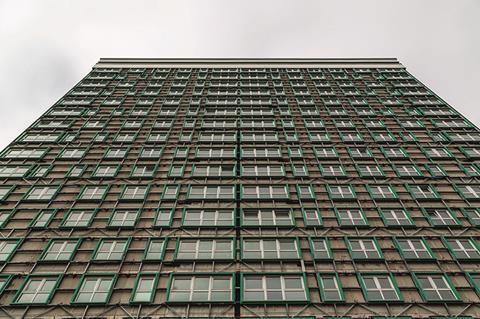
The TCC has plainly demonstrated in this decision that it will take a firm view on an external wall system’s compliance with ��Ȧ Regulations in force at the time of construction. I am sure it has set an enduring precedent in future cladding claims and related fire safety remediation cases.
Most recently, on 23 December 2022, the TCC gave judgment in the case of LDC (Portfolio One) Ltd vs (1) George Downing Construction Ltd; (2) European Sheeting Ltd (in liquidation). It has provided yet further invaluable insight into the approach the courts will take to the host of cladding claims and liability issues around them.
The case involved recladding and associated remedial works to cure fire safety and water ingress issues in relation to the external wall construction by the claimant (LDC) of three halls of residence over 18m high, built in Manchester in 2007-08. The first defendant (Downing) was the main contractor, and the second defendant (ESL) was a specialist subcontractor responsible for the external wall construction, including the cladding and rainscreen works. By the hearing, ESL had entered creditor’s voluntary liquidation and was unrepresented.
Subcontractors also at risk
The freeholder initially pursued the defendants under the terms of two collateral warranties for the cost of rectifying the The freeholder initially pursued the defendants under the terms of two collateral warranties for the cost of rectifying the defects. The freeholder managed to settle its claim with the contractor and thereafter sought recovery from ESL, for the cost of remedial works (about £16.4m) and loss of income (£4.6m). The contractor also sought an indemnity and/or contribution from ESL for the same defects pursuant to its subcontract.
LDC’s case was that there were: i) numerous defects in the external composite cladding elevations; and ii) fire barrier and fire stopping issues on all elevations.
The TCC was asked to consider several issues, including the scope of ESL’s subcontract obligations to comply with the ��Ȧ Regulations 2010 (BRs).
The main contract required Downing to comply with “all statutory requirements” which included the BRs. ESL argued that, as there was no equivalent obligation in its subcontract, it had no general obligation to comply with the BRs. Instead, it said it was only liable for design matters if it failed to exercise reasonable skill and care.
A duty to exercise reasonable skill and care is likely to be construed as a minimum requirement only
But the TCC disagreed. It referred to the subcontract, which stated that ESL was obliged not to place Downing in breach of its obligations under the main contract (a common clause). A reasonable skill and care clause could not supersede this obligation.
If two contract clauses could potentially impose different standards, the court said, the clause imposing the lesser standard should be treated as a minimum requirement. Therefore, as the cladding did not comply with the BRs, ESL was in breach of under the subcontract.
The court found for the freeholder, which was entitled to recover £21m from the subcontractor for the cost of remedial works and loss of income. The contractor was also entitled to an indemnity from the subcontractor, as it had put the contractor in breach of the main contract. The TCC added that, in the absence of an indemnity, it would still have held the subcontractor liable under the Civil Liability (Contribution) Act 1978. So watch out, subbies!
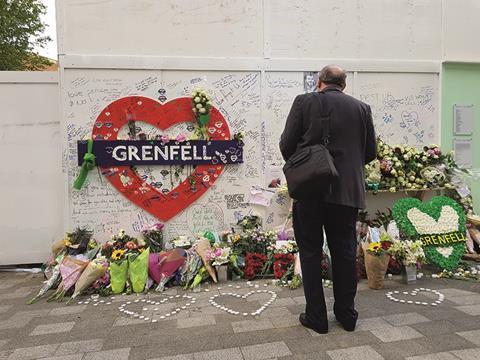
ESL also argued that LDC’s remedial works failed to mitigate its loss and that the cost of the remedial works was “unreasonable”. However, on the basis that (i) LDC had relied on expert advice in deciding to carry out the works, (ii) the works were effective to cure the defects and (iii) the works complied with the updated BRs, the TCC held that ESL had failed to demonstrate that the remedials were unreasonable.
The court also endorsed the decision in Martlet which said the courts would not be too critical of a choice of remedial works if that choice was made as a matter of urgency. So, following good expert advice is key.
>>What the second staircase rule would mean for high-rise blocks
>>��Ȧ the Future Commission: introducing the building safety stream
This decision shows that the courts are continuing to take a robust approach to liability attribution in cladding defects claims and are committed to dealing with cladding and fire safety defect claims firmly, exposing contractors. A duty to exercise reasonable skill and care is likely to be construed as a minimum requirement only, and one which does not derogate from the designer’s strict obligation to comply with the ��Ȧ Regulations.
A new Triathlon at the Olympic Park
Next in this trilogy is Triathlon Homes vs Get Living. Get Living is the owner of London’s Olympic Village and is being pursued for £27m-plus by Triathlon to improve fire safety standards, in a dispute underlining the slow progress of implementing improvements six years on from Grenfell.
Triathlon Homes is a housing association which leases and manages 1,379 affordable apartments from Get Living on the Olympic estate. It claims that Get Living, as the present owner of the site, is responsible for fire safety remedial work.
Triathlon has applied to the First-Tier Tribunal (Property Chamber) for an order that would force Get Living to accept responsibility for funding all the necessary work as it is Get Living’s case that Triathlon has never been willing to fund its share of the cost.
The dispute underscores one of the major current challenges, namely determining who should pay to repair flat blocks built years ago and that have since changed hands
The dispute underscores one of the major current challenges in solving the safety crisis exposed by the Grenfell fire, namely determining who should pay to repair flat blocks that were built years ago and have since changed hands. The uncertainty is at present unavoidable. Every side is finding its way.
Of the 66 blocks on the Olympic estate, rebadged East Village, 16 still await cladding safety certificates that banks require to fund mortgages, and also fire safety sign-off. Triathlon’s case relates to the five blocks it manages.
Of the estimated remediation on the blocks of £27m in total, about £16m is associated with the properties managed by Triathlon, with the remaining £11.5m for properties owned and managed by Get Living.
Get Living is the majority shareholder in the management company for the East Village, EVML, which is responsible for maintaining shared parts of the estate as well as fire safety. Triathlon has a minority stake.
It seems EVML has applied for £13.5m from the government’s ��Ȧ Safety Fund (BSF) managed by the DLUHC to cover the majority of the cost of work to Triathlon-managed properties.
As I see it, Triathlon’s case reflects anxiety that it will ultimately be hit with the cost of repairs, with the company stressing that BSF funding is not guaranteed, and may not cover the full cost of works. Triathlon claims it should not have to pay because it is a leaseholder from Get Living, the freeholder.
If the tribunal concurs, this will relieve Triathlon of the liability of costs and encourage Get Living to advance fire safety repairs.
Michael Gove has made it clear that he expects property developers and freeholders to remedy fire safety problems and not pass costs on to leaseholders. Here we are seeing some of the agony offstage.
The road ahead
Summing up, these two TCC cases show that contractors will struggle to successfully challenge the costs of an implemented and effective remedial solution, especially one based on expert advice. It is not enough to say that the defects could have been remedied through an alternative scheme for a lower cost – parties will need to show the approach taken was unreasonable.
For some years, many thousands of people have been powerless to move and get on with their lives until remediation takes place, because banks refuse to extend mortgages against properties that have not been signed off as fire-safe.
Basically, who picks up what and pass-the-parcel tactics will continue until more cases settle policy and liability. This illustrates that sharing risk and responsibility is ultimately, in most cases, going to have to be determined by tribunals – and not over a cup of coffee.
Simon Tolson is a senior partner at Fenwick Elliott and a ��Ȧ the Future commissioner
Clarification
This clarification was submitted by Stephanie Barwise KC and added on 22 February 2023
The preface to this article suggests certain comments made in the Inquiry are an indicator of the direction of travel and includes a quotation attributed to me from the Module 6 (Government) oral closing submissions: “It is therefore fundamentally misleading to characterise the parlous state of the building regulations as an unfortunate by-product of a prolonged lapse in concentration by the department’s officials tinged with some unspecified ministerial responsibility and a degree of austerity. It is more than that. The evidence points to wilful blindness and complacency towards safety which was subjugated to the more pressing and politically appealing housing and deregulatory agendas”.
The quotation is accurate. We submitted that Government was undoubtedly at fault, in that the guidance contained in Approved Document B “A�ٵ�” did not support the achievement (certainly for a high-rise building) of the Functional Requirements for the external wall in the ��Ȧ Regulations, B4(1), namely adequately resist the spread of fire over the walls. The testing regime underlying ADB, namely National classes, European fire classes and large-scale BS 8414 tests would not, according to the Inquiry’s experts (Professors Torero and Bisby) necessarily support the achievement of Functional Requirement B4(1). Not least, ADB diagram 40 included reliance on a flawed metric, namely National class 0, as suitable for the cladding panels.
The quotation however does not reflect the overall position we consistently took throughout the Inquiry, namely that, despite a critical lack of clarity in ADB, Industry was primarily responsible for the events which led to the disaster. This was partly because ADB was non mandatory guidance, not an absolute guarantee of compliance and the Inquiry’s experts (Professors Torero and Bisby and Messrs Hyett and Sakula) considered the guidance sufficiently clear to be capable of being understood by competent industry professionals.
I prefaced the above quoted remarks with “Whilst of course in module 6 it is right to focus on Government and related institutions’ responsibility for events, industry’s role in the events which led to Grenfell is ultimately more important. What follows must be understood in that light”.
Quoting my criticism of Government’s guidance in isolation also does not reflect the position of Government in the “rogues gallery” line-up which I identified in the over-arching submissions at the Inquiry’s close. The first tier of that line-up comprised Arconic (cladding panel manufacturer) Studio E (Architect and Lead Designer) and Exova (fire safety engineer). The second tier contained Harley (cladding sub-contractor), Rydon (D&B contractor) RBKC (local authority and ��Ȧ Control body) and Government.
Yours faithfully,
Stephanie Barwise KC
��Ȧ the Future Commission
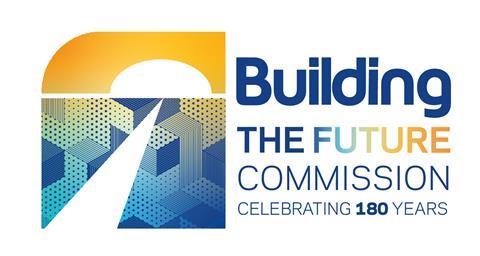
Coming up on the ��Ȧ the Future commission:
In the coming weeks we will:
- Host our first regional roundtable with our partner Constructing Excellence in the East of England region in mid March
- Convene our first commissioner panel meeting at the end of March
- Investigate the potential of building performance rating system NABERS as an alternative to Part L for the energy and net zero stream
- Interview two big hitters in the world of infrastructure for the infrastructure stream
- Examine whether the qualifications landscape needs to change and assess whether more flexibility is needed for our education and skills stream
- Visit the University of Salford to assess the eHome2 concept for our energy and net zero stream
- Investigate how for-profit affordable housing can deliver the homes we need for the housing and planning stream
- Assess a new model of procurement used by the Ministry of Defence for the project delivery and digital stream
- Look at models of flexible working in the industry for the workplace, culture and leadership stream
About the commission
The ��Ȧ the Future Commission is a year-long project, launched to mark ��Ȧ’s 180th anniversary, to assess potential solutions and radical new ways of thinking to improve the built environment.
The major project’s work will be guided by a panel of 19 major figures who have signed up to help guide the commission’s work culminatuing culminate in a report published at the end of the year.
The commissioner include figures from the world of contracting, housing development, architecture, policy-making, skills, design, place-making, infrastructure, consultancy and legal.
The commissioners include Lord Kerslake, former head of the civil service, Katy Dowding, executive vice president at Skanska, Richard Steer, chair of Gleeds, Lara Oyedele, president of the Chartered Institute of Housing, Mark Wild, former boss of Crossrail and chief executive of SGN and Simon Tolson, senior partner at Fenwick Elliott. See the full list here.
The project is looking at proposals for change in eight areas:
- Education and skills
- Housing and planning
- Infrastructure
- ��Ȧ safety
- Project delivery and digital
- Workplace culture and leadership
- Creating communities
>> Editor’s view: And now for something completely positive - our ��Ȧ the Future Commission
>> Click here for more about the project and the commissioners
��Ȧ the Future will also undertake a countrywide tour of roundtable discussions with experts around the regions as part of a consultation programme in partnership with the regional arms of industry body Constructing Excellence. It will also set up a young person’s advisory panel.
We will also be setting up an ideas hub and we want to hear your views.
>> Email buildingfuturecommission@building.co.uk to get in touch









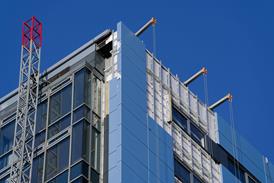













No comments yet